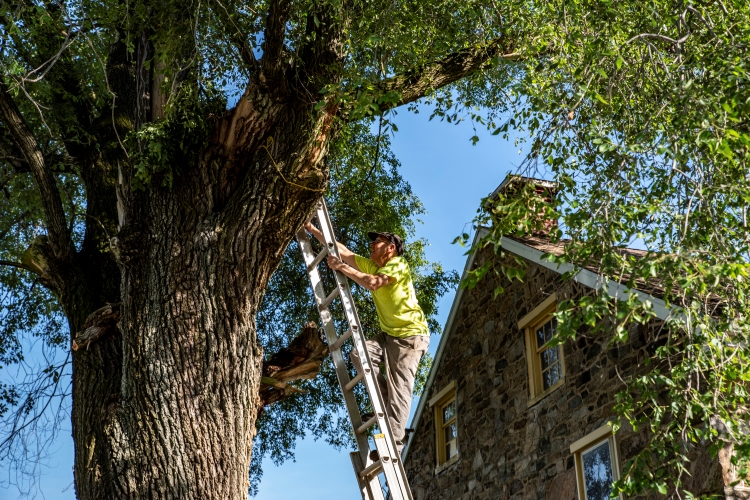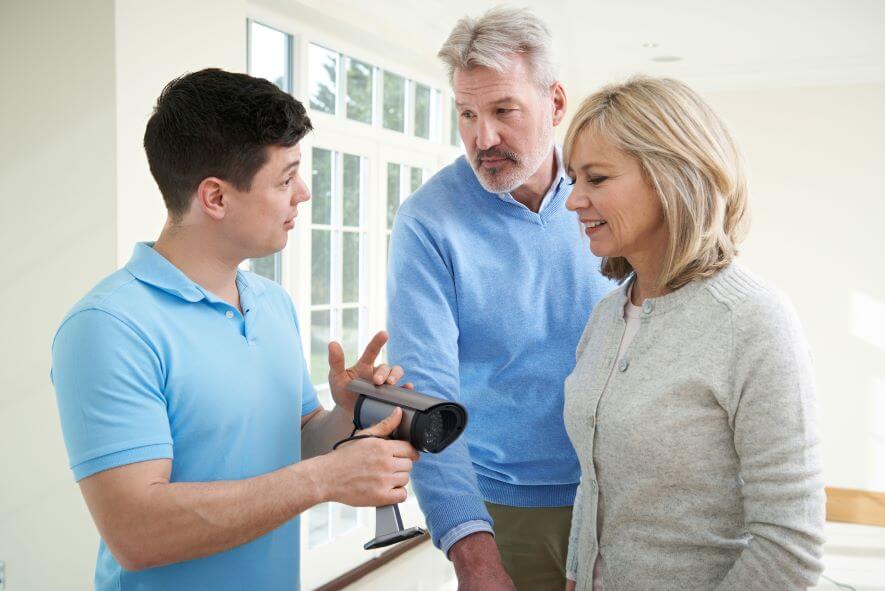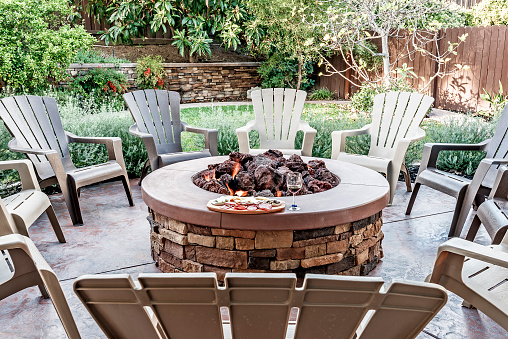Before you attempt to use a ladder, protect yourself by freshening up on the basics of ladder safety.
A ladder can be very handy when you want to reach new heights in home improvement—literally. You’ll probably need one if you’re planning to change the batteries in your smoke alarms, paint your crown molding or trim your taller bushes, for example.
But every year, ladder accidents send thousands of people to the hospital. In fact, according to the Centers for Disease Control and Prevention,
each year in the U.S., more than 500,000 people are treated and about 300 people die from ladder-related injuries. The average age of a person falling from a ladder is 55, and the severity of injury increases with age, according to a study on ladder falls from the Journal of Surgical Research.
“You’d think it would be pretty rare, but every couple of weeks I see someone who’s fallen off something, be it a ladder or a step stool,” says Dr. Eric Watson, a board-certified orthopedic surgeon at Orthopedic Institute in Sioux Falls, South Dakota. These accidents commonly occur in spring and fall, when homeowners are cleaning out their gutters, and over the holidays, when they’re putting up lights, he says.
A tumble off a ladder can cause ankle sprains, hip fractures, back problems and head injuries, says Dr. Barbara Bergin, a board-certified orthopedic surgeon at Texas Orthopedics in Austin, Texas.
Eight Tips for Climbing Those Rungs Safely
Ladders are designed to be sturdy and safe, says David Francis, a ladder safety expert and blogger, and the National Safety Director for Little Giant Ladder Systems. “If a ladder is used properly, it’s not going to be the cause of a fall,” he says.
1
Choose the Right Ladder for the Job
Before setting foot on the ladder, check to make sure it is in good working order, has no broken or missing parts and doesn’t lean to one side.
Ladder safety starts with your pick of ladder, says Francis. Homeowners often purchase a short, light, easy-to-carry ladder, and then try to use that ladder even when the job requires something taller, he adds. The American Ladder Institute’s (ALI) guide to basic ladder safety recommends that you choose a ladder that is tall enough that you don’t have to stand on its top rung or step in order to work.
2
Trouble Balancing? Consider a Step Stool
It might be that the right tool for you isn’t a ladder at all.
For projects inside the home, a step stool might be the better choice, especially if you have trouble balancing. According to Francis, a ladder can exacerbate any balance problems. Not only does a step stool have wider steps, but those steps are positioned more like a staircase, making it easier to climb, says Francis.
Still, falls from step stools, even from a foot off the ground, can cause serious injuries, says Watson. You’ll still want to take every safety precaution possible when using them.
3
Wear Safe Shoes
Never climb a ladder in bare feet, flip flops or sandals, says Bergin. “Wear stable, supportive shoes.”
The ALI recommends that you wear slip-resistant shoes with clean, heavy soles, but that you avoid shoes with leather soles, as they may not provide enough traction as you climb the rungs.
4
Position the Ladder Properly
Position your ladder on an even, stable surface.
Avoid placing the ladder on soft ground (such as dirt or mulch), because this may cause the ladder to shift. And don’t place the ladder in front of a closed door that opens toward the ladder, unless the door is locked or someone is watching it while you work, the ALI warns.
If you’re using an extension ladder, place it at a 75-degree angle against the house. To determine whether it’s positioned correctly, stand in front of the ladder with your toes touching its base. Extend your arms straight out. Your palms should touch the ladder, says Francis.
5
Climb the Right Way
Follow the Three Points Contract Rule
When you’re on a ladder, ALI recommends following the Three Points Contact Rule: keeping one hand and two feet or one foot and two hands on the ladder at all times. This allows you to maintain your grip on the ladder even if you slip.
Generally, it’s okay to carry a light tool such as a paintbrush or a screwdriver in your hand, as long as it doesn’t prevent you from having three points of contact with the ladder, says Francis. “If you’ve got a paint brush in one hand and a gallon of paint in the other, that’s a different story.” In that case, use a tool belt or have a helper hand you the items that you need, he says.
6
Move the Ladder
Once you’re up on the ladder, resist the temptation to overreach, which can cause the ladder to tip over or you to fall off.
Climb down carefully and reposition the ladder so that you can easily reach your work.
As a guideline, the ALI recommends that you keep your belt buckle (or belly) between the side rails while on the ladder. “Make sure your weight is centered,” says Watson. “It’s pretty easy to get off-kilter on a ladder.”
7
Watch Your Step on Your Way Down
It’s not just falls from higher rungs that cause injuries.
“Much like with stairs, patients often misjudge that last step,” she says. Since it can be difficult to see below when you climb down a ladder, count the rungs as you ascend and descend, Bergin recommends, so that you’ll know when you’ve run out of rungs and reached the bottom.
8
Call a Pro
There are times when it makes sense to call in a pro to do a job that requires working on a ladder.
For example, if you suffer from vertigo or take a medication that can make you dizzy, avoid ladders. Or if there’s an unwanted wasp or animal nest up high, consider hiring a pest control company to remove it.
“When you’re on the ground and a hornet flies at you, you do everything you can to get away from it,” says Francis. “If you’re on a ladder, you’re stuck or you’re going to lose your balance and fall.”
Using a ladder means taking your time and putting safety first. “It’s when people try and take shortcuts that accidents happen,” says Francis. Follow these tips to reduce the likelihood of an accident and to stay safe while you work in and around your home.







This is such an amazing article. I love it!
regarding ladder safety: while on any ladder someone should be holding the ladder to prevent
the person from falling and suffering injury.
This is one of the best article in this blog,thanks for sharing information about scaffolding ladders in google chrome browser…good job